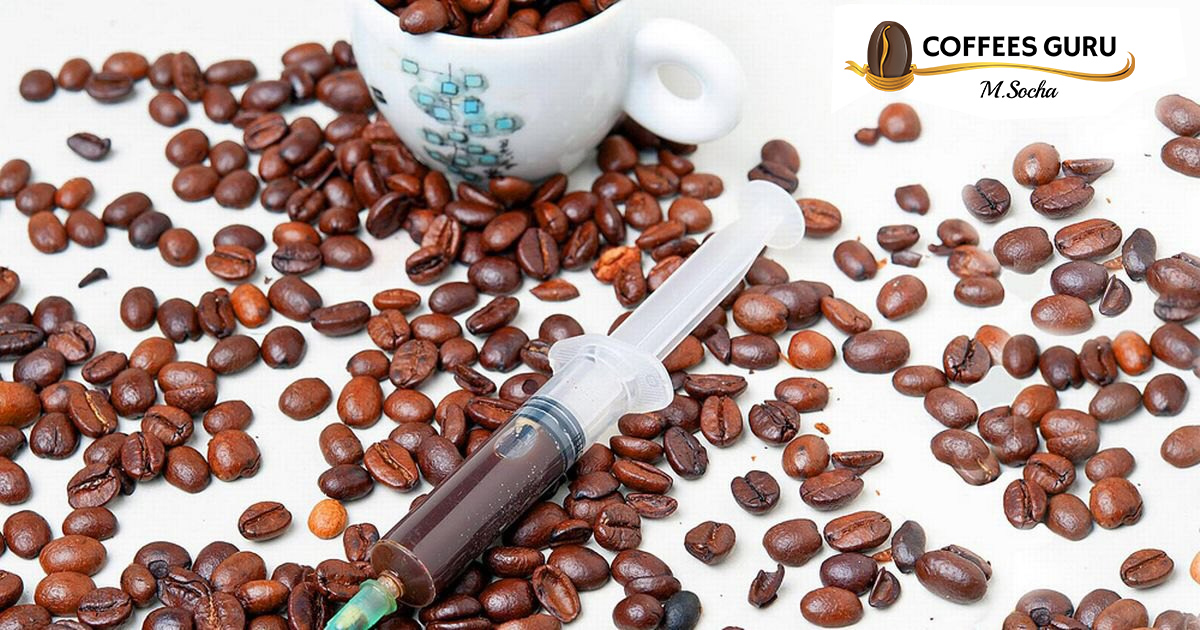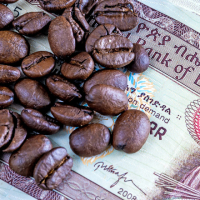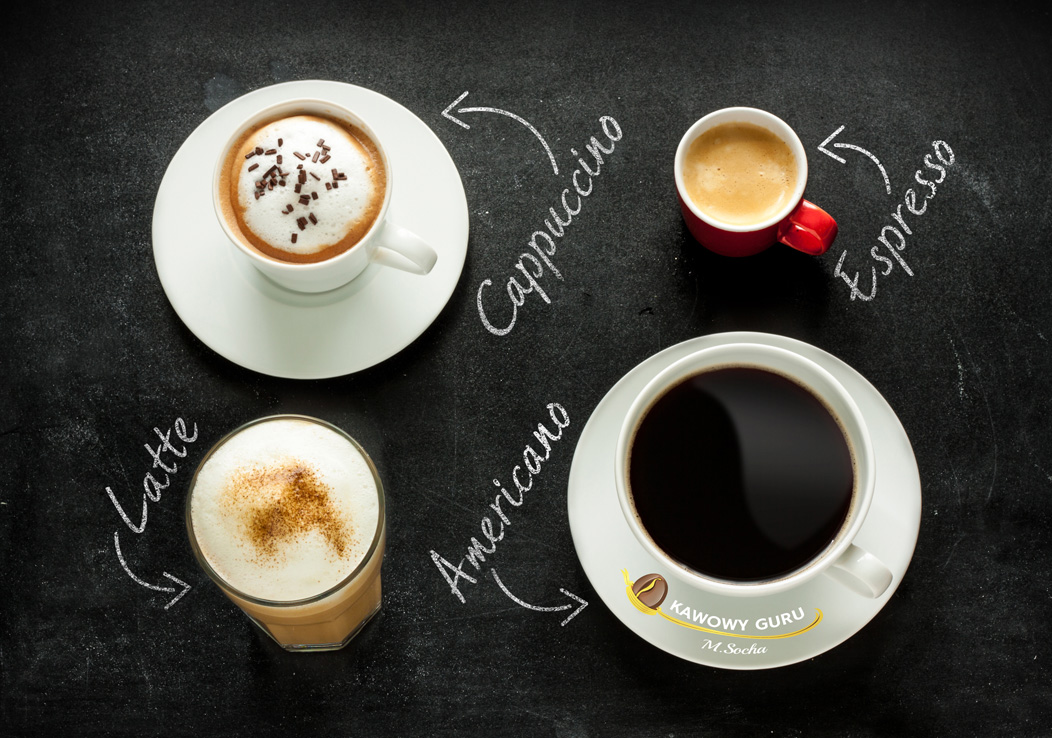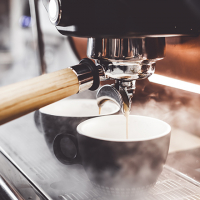Caffeine. It’s almost considered a coffee synonym and is surrounded with many myths. What is it and how does it affect our body? Which coffee has the most caffeine? This article will describe, everything you would like to know about caffeine.
It was first isolated in 1820 by German chemist Friedlieb Ferdinand Runge. Caffeine is one of the most popular nervous system stimulant. Many people drink coffee only because of it’s stiumulating properties and it has to be mentioned, that coffee doesn’t harm your health (unlike other nervous system stimulants, e.g. nicotine, alcohol or drugs). Researches proved, that people who drink coffee regularly don’t have the need to increase their caffeine consumption.
Many people can get used to it and don’t feel the “coffee kicking in”, but it’s very rare for someone to have the need to drink few coffees in a row to satisfy their caffeine hunger (unlike drugs or alcohol). It’s because, coffee drank in reasonable amounts doesn’t produce dopamine, which stimulates a so called reward system. You would have to absorb about 1000 mg of caffeine (which gives arout 7-8 cups of coffee) to stimulate your reward system.
Caffeine becomes dissolved it about 15 minutes after absorbtion and it takes more or less 1 hour to fully dissolve it. It’s dissolving time is also connected to metabolism procceses, which are different for every person. Milk slows down the dissolving of caffeine by a significant time. If you drink cappuccino or latte, it’s dissolving can take up to 4 hours. Some people (including this blog’s author) drink coffee before sleep. Is it stupid? Not entirely.
Before caffeine starts working, a wave of fatigue kicks in (it doesn’t happen for everyone), some people feelt it more than they feel the excitation phase. So, if you have problems with falling asleep, maybe you can try drinking a cup of espresso before going to bed? Sometimes simple solutions don’t go in pair with logic…

Almost all serious scientific researches proved that caffeine consumed in reasonable amounts (from 3 to 5 cups a day) doesn’t harm your body, if fact, it’s the other way around – it has a positive effect on our body. It improves brain circulation, which means improving concentration and perceptivity. It also makes it easier to remember different things, because it slightly increases the adrenaline level (as a result of different bio-chemical processes), which results in increasing the amount of acetycholine.
It improves efficiency of cardiac system, increases metabolic rate, improves our mood and relieves headaches (caffeine is an ingredient in many painkillers). It makes a lot of good stuff! It’s worth to say that pregnant and breastfeeding women don’t have to completely give up drinking coffee. Researches prove that consuming up to 300 mg of caffeine (wich is around 2-3 cups of coffee) doesn’t affect the fetus negatively and doesn’t get through to the milk.
Caffeine content in different types of products
Here are some examples of products that contain the caffeine:
| Product type | unit | Caffeine content |
|---|---|---|
| Coffee (random brews) | cup / 150g | 30-180mg |
| Espresso | cup / 25ml | 27mg |
| Instant coffee | cup / 150g | 60-80mg |
| Decaffeinated coffee | cup / 150g | 3-4mg |
| Black tea | cup / 150g | 30-50mg |
| Energy-drink | can 250ml | 80mg |
| Coca-Cola | can 330ml | 40mg | Painkilling tablets | 1 piece | 60mg | Cocoa | cup / 150g | 3-5mg | Dark chocolate | bar / 150g | 15-115mg |
Coffee is a food product that has the highest amount of caffeine. Of course, there are different variations of coffee, that’s why the amount of coffee can vary from 30 to 180 mg depending of coffee variation and roasting level.
Caffeine extraction is increased by high temperature, brewing time and also thickness of ground beans. The coffee with the highest amount of caffeine is Turkish coffee (made in a special pot, called cezva – you can read an article about it HERE). Turkish coffee is very finely ground and boiled.
This results in ideal conditions for caffeine extraction. On the other side, classic espresso doesn’t have that much caffeine as it brews for only 25 seconds and to fully extract caffeine it needs to brew for at least 1 minute. Espresso is very intense as a result of extracting aroma-flavor compounds, that have to fit in a small amount of drink (25 ml). It’s worth to say that espresso from pump espresso machine and espresso from automatic espresso machine have different amounts of caffeine.
That’s because brewing in the second one takes about 10 seconds less, which means lower caffeine extraction. A significantly higher amount will be found in pump espresso machine, because brewing takes few minutes and ground beans are constantly poured with hot water.
There are some other products containing caffeine, energy drinks have relatively high amount of caffeine (a can of 250 ml has about 80 mg of caffeine). A cup of black tea has around 3 times less caffeine than a cup of coffee. A can of Cola has about 40 mg of caffeine and painkiller pill has more or less 60 mg.
At the end, a key thing for all coffee lovers, who drink a LOT of coffee. Deadly dose of caffeine is 10 000 mg. So, you would have to drink 65 cups of coffee to get there – which is about 10 liters of coffee. So if you worry, because you drink 10 cups of coffee a day and think it’s too much – you don’t have to worry! [however 10 is a very large amount, it’s better to reduce it to 6 or 7 cups a day]









